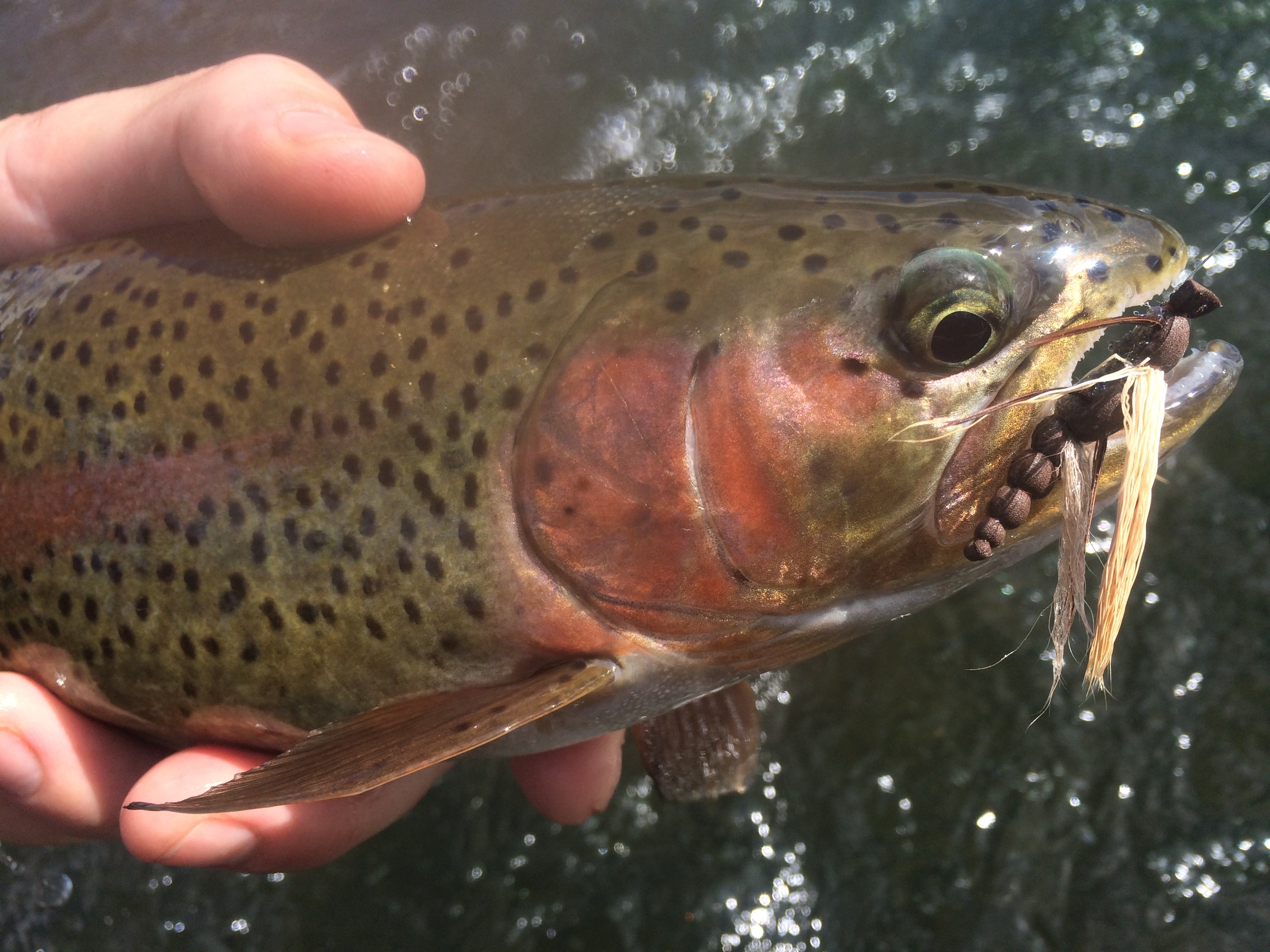Deschutes Salmonfly Primer
Bow to the queen!
Another spring, another salmonfly hatch on the Lower Deschutes River. As I type this, big armor plated salmonfly and golden stonefly nymphs are marching upstream. Stoneflies are inherently clumsy animals and the trout are picking them off as they lose their footing on the stream bed. This can be a productive time to fish the Deschutes, but most of us are looking forward to when the stones hatch and the trout key into the adults on the surface.
There is no shortage of water this spring and the Cascades have a good snow pack, so I don't predict the hatch will pop quite as early as last year. I expect to find trout eating dry stoneflies in isolated areas by the second week of May, possibly sooner.
Here are a few tips to help you out during the big hatch...
A classic moment in fly fishing.
Wear neutral colored clothing.
Wearing bright clothing, including white, is a big mistake. Huge. No need to go into great detail here, just wear browns, tans, greens, and greys.
Sparse flies catch more fish.
There are some great commercially tied stoneflies available at most local fly shops here in Central Oregon. Most of them work well right "out of the package", but you will have an advantage if you trim some of the excess wing material, tear off plastic wings, or trim the hackle flat on the underside of the fly. Sparse flies kick butt!
Move often.
The trout are either going to pounce on your fly or not. Try and avoid casting in the same place more than a few times.
I've got 99 problems but a fish ain't one!
It's the stonefly hatch, not just the salmonfly hatch.
While the pteranarcus californica gets all the publicity, it is only one of three species of stoneflies with overlapping hatches. The golden stonefly is likely the trout's favorite, and a well presented yellow sally will fool even the most jaded of trout who during the later stages of the stonefly hatch can probably tie a better chubby chernobyl than Umpqua. Carry a few different patterns that represent all three species of stoneflies is a good idea.
A few variations of the Daddy Longlegs, a salmonfly pattern I developed about seven years ago.
Use the bow cast.
When the masses hit the river with stoneflies the trout know it and take cover in dense brush where no mortal can present a fly. Introducing the bow cast (aka the bow and arrow cast). Here's how it works... you want only a few inches of your fly line out the tip of your rod, so that the nail knot doesn't hang up in the tip guide when the trout screams into the current... lets not put the cart before the horse though. With just your leader out you point the rod towards the trout, carefully poking the rod tip through the brush. You pull pack on the fly, avoiding the point of the hook (this will take practice, you will hook your thumb a few times). The rod tip flexes upwards and you release the fly. If everything goes well the fly flutters through the brush and lands deftly right in front of the trout's face. the most common thing that goes awry with bow casting is when the rod tip splats into the water when you release the fly. Game over. The remedy - hold the handle of the rod as low to the water as you can. When the rod is at ease (not flexed at all) it should stick out horizontally over the water parallel with the surface. This will also take a bit of practice.
Come to Daddy.
Hope these words of advice help you into some fat redsides!
Learn more about our Deschutes River float trips.
Take care,
Chris






